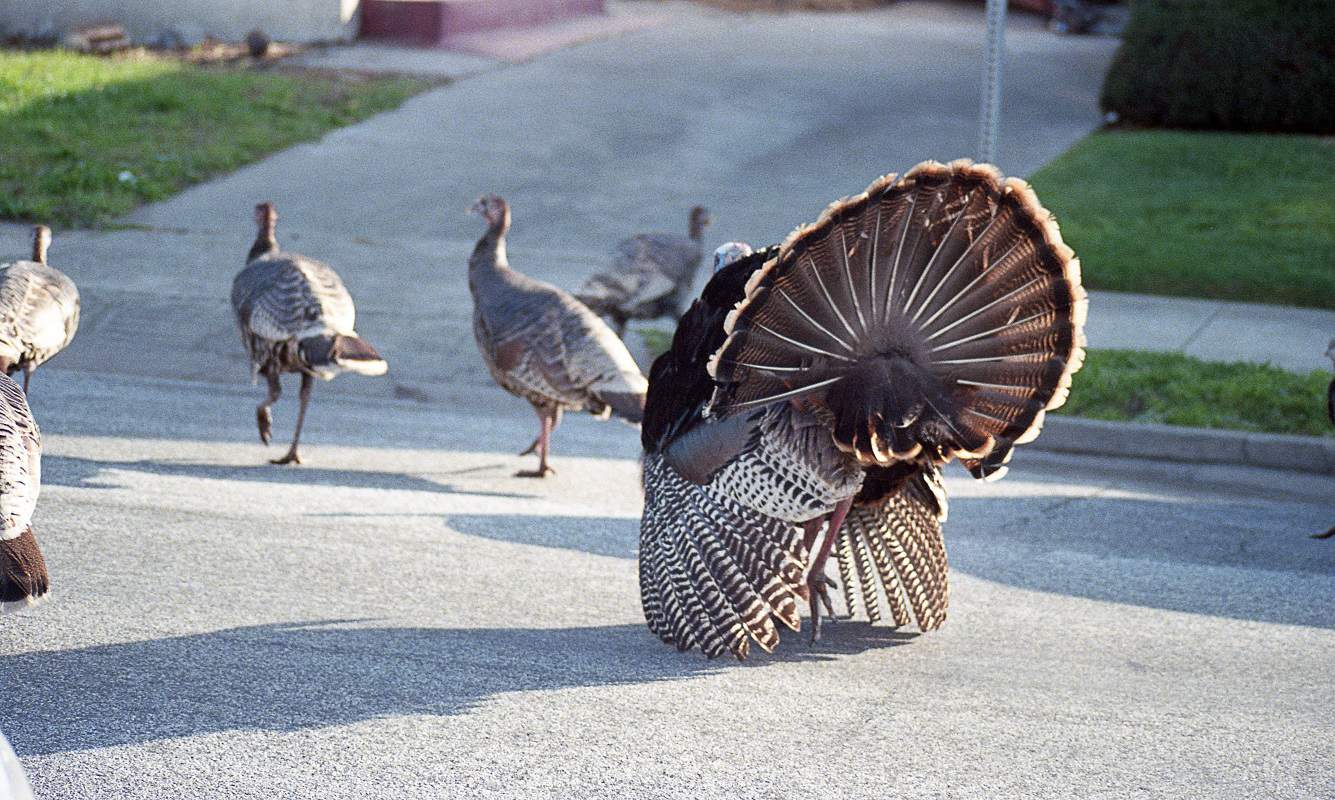Photo by Sara Löwgren shared via Flickr Creative Commons
When I began working with high-wildfire risk neighborhoods, I started seeing more wild turkeys than I had ever seen in my life. It seemed like every neighborhood I visited had a flock. So, what do wildfire-prone neighborhoods and turkeys have in common in Southwest Colorado? Gambel oaks. Meriam’s turkeys love acorns, and the Gambel oak shrubs produce abundant acorns while also being a major contributor to wildfire risk.
Turkey/Fire Trivia
As many of us enjoy turkey dinners over the holidays, here’s a little turkey/forest/fire trivia:

A wild turkey foraging in one of Oregon’s many mixed hardwood stands. Credit: wplynn via Flickr Creative Commons
- Turkeys often live in hardwood forests, where acorns are an important component of their diet.
- The turkey oak tree is named for its leaves which are shaped like a turkey foot, not for how much turkeys love its nuts.
- A turkey’s long nails enable it to find food that might be buried beneath freshly masticated fuels.
- Turkeys quickly return to burned meadows to find insects flushed out by wildfire. But, they better get there quickly, as quail and songbirds are often on the lookout for some of the same tasty critters!

Turkeys eat acorns in the fall and winter. In many oak forests, you can notice a V-shaped scratching in the leaf litter (a sure sign of wild turkeys). Shown above is another sign of wild turkeys- fresh tracks! Credit: Virginia State Parks via Flickr Creative Commons
Hungry for More?
Here are a few more fun turkey facts from The Cornell Lab of Ornithology’s All About Birds:
- The origins of this animal’s name are not certain, though some suspect that it has to do with the trade route (which included a stop in the country of Turkey) taken when shipping these birds from the US to Europe.
- Turkeys can travel in groups of up to 200!
- Female turkeys are called Jennys until adolescence, after which they are called Hens. Male turkeys are called Jakes when they are young and then Toms or Gobblers upon maturity.
- Turkeys can swim! However, I couldn’t find any pictures to prove it. Trusting the ornithologists on this one.

Turkeys walking through a neighborhood. Will turkey populations one day be a formal wildland-urban interface indicator?! Credit: Paul Sullivan via Flickr Creative Commons.
Resources
- Check out this resource page from North Carolina State Extension regarding the relationship between turkeys and fire.
Please note that comments are manually approved by a website administrator and may take some time to appear.


Thanks for the fun holiday trivia! You’ve got me wondering how the turkey populations will respond in the burned areas across the Southeast US, due to the wildfires this past fall. Several variables come to mind: loss of winter cover, oak trees doing well next year (or not), changes in predator success, etc.